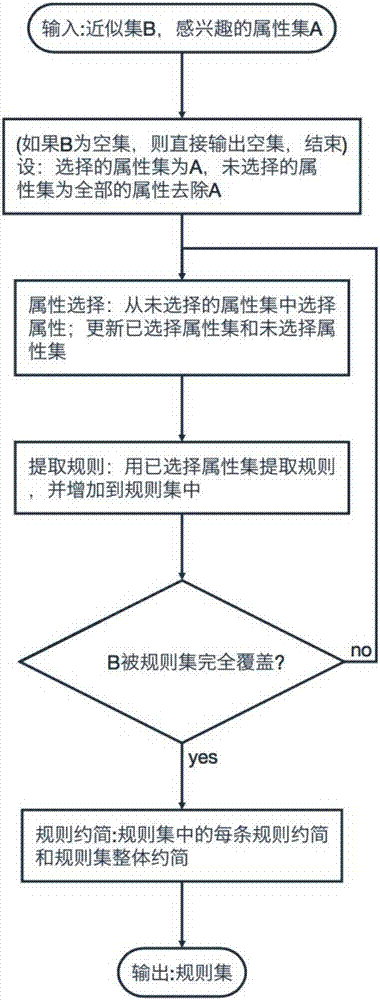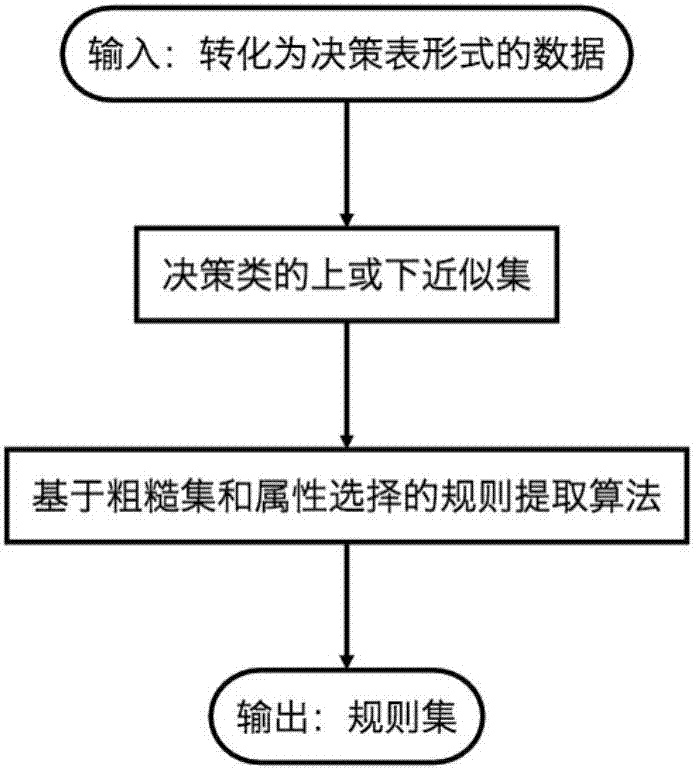Decision rule extraction method based on rough set and attribute selection
A technology of attribute selection and extraction method, applied in special data processing applications, instruments, electronic digital data processing, etc., can solve the problems of lack of flexibility, lack of overall reduction of rule sets, insufficient reduction of rule sets, etc.
- Summary
- Abstract
- Description
- Claims
- Application Information
AI Technical Summary
Problems solved by technology
Method used
Image
Examples
experiment example
[0025] This example illustrates by taking the extraction of possible rules from the upper approximate set of decision classes as an example.
[0026] 1. Data in decision table format:
[0027] A decision table DT=(U, AT=C∪D, V, f), where U is the object set (discourse domain), C is the condition attribute set, D is the decision attribute set, V is the range, f is U and AT to V mapping.
[0028]
a1
a2
d
x1
1
1
2
x2
2
1
1
x3
1
3
1
x4
1
3
2
[0029] For the decision table above:
[0030] Object U = {x1,x2,x3,x4}
[0031] Condition attribute set C={a1,a2}
[0032] Decision attribute set D={d}
[0033] 2. Calculate the upper approximate set of each decision class:
[0034] decision class D 1 ={d=1}={x2,x3}
[0035] decision class D 2 ={d=2}={x1,x4}
[0036] Under the conditional attribute set C, D 1 upper approximation set of
[0037] Under the conditional attribute set C, D 2 upper ap...
PUM
 Login to View More
Login to View More Abstract
Description
Claims
Application Information
 Login to View More
Login to View More - R&D
- Intellectual Property
- Life Sciences
- Materials
- Tech Scout
- Unparalleled Data Quality
- Higher Quality Content
- 60% Fewer Hallucinations
Browse by: Latest US Patents, China's latest patents, Technical Efficacy Thesaurus, Application Domain, Technology Topic, Popular Technical Reports.
© 2025 PatSnap. All rights reserved.Legal|Privacy policy|Modern Slavery Act Transparency Statement|Sitemap|About US| Contact US: help@patsnap.com



